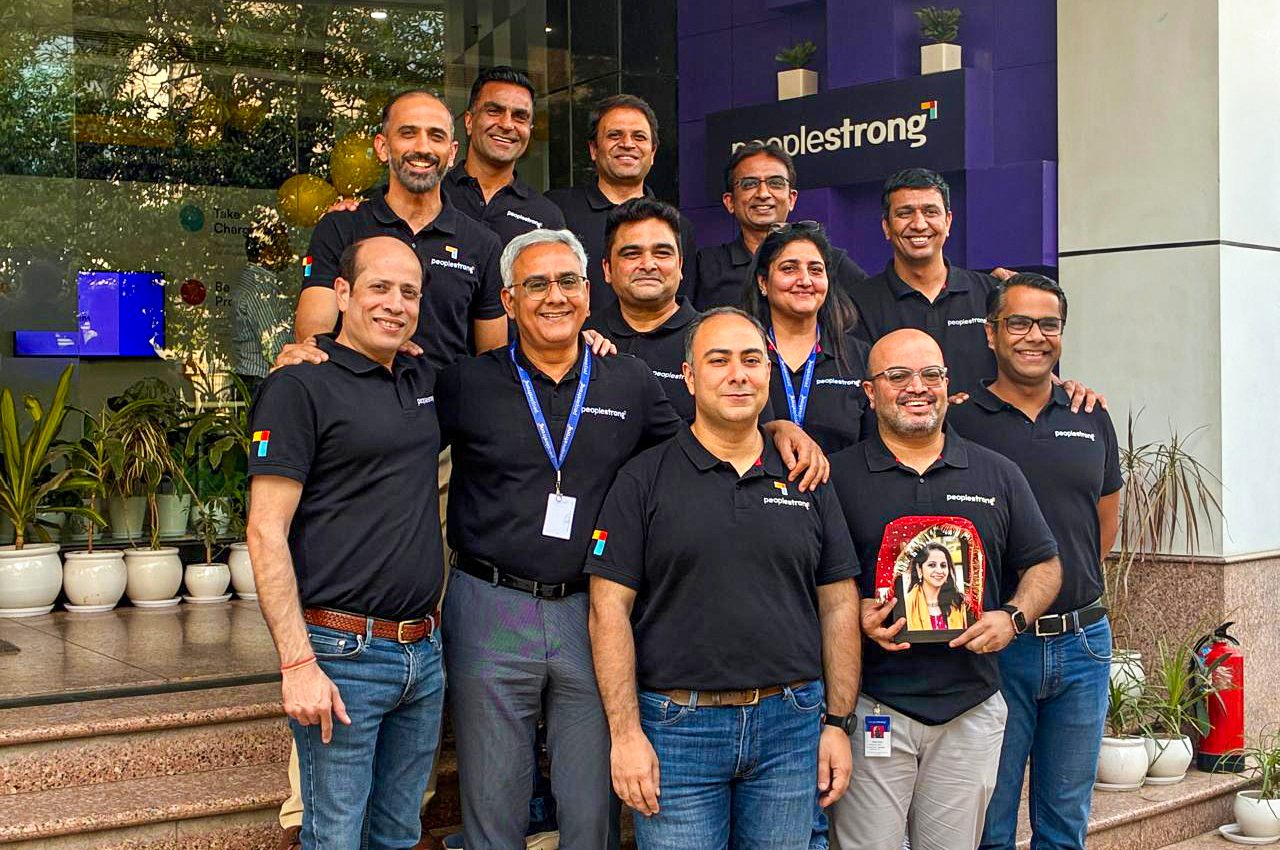As artificial intelligence invades the workplace, the bot has also become the new hiring manager. Is this the way companies will hire, manage and train the workforce now?
It’s the buzzword that’s taken over most human resources (HR) conferences. At last year’s HR Technology Conference and Expo in Las Vegas, several companies touted the integration of artificial intelligence (AID) into their recruiting products. The next conference in September explored AID in the HR landscape through multiple sessions, focusing on its role in hiring, eliminating bias, etc. Back home, the 2018 SHRM HR Tech Conference, held in Hyderabad in April, saw key sessions on how AID is going to be a driving force in HR functions. Their next conference in Chicago, held in June, had sessions on how to use AID to better understand employees.
AID, or the ability of machines to imitate the human mind, is invading the workplace. The aim is to recruit staff, improve employee engagement, reduce bias and enhance productivity. While the concern of automation taking away jobs continues, what has changed now is the way companies are looking at incorporating AID in day-to-day HR activities. “Firms are looking at replacing manpower with AID for tasks that are redundant and repetitive. They are looking at creating jobs, where people will have to put their cognitive thinking and decision-making skills to use. This will be a boon to HR managers who will be able to shift their focus from tactical work to strategic work,” says Arjun Pratap, founder and CEO, EdGE Networks, a Bengaluru-based AID-driven HR tech solutions provider.
According to a 2017 report published by Toronto-based regulatory body Human Resources Professionals Association (HRPA), AID is expected to continue as a growing trend in the coming years. “AID will assist humans who will step in whenever complexity increases,” says Arup Roy, research-VP, Gartner, a global research and advisory firm. The report found that 84% of HRPA members across the world believe that AID is a useful tool for human resources and around 14% are already using it in some form to assist with HR decisions in their organisations.
“AID can play an important role in talent acquisition, performance management, attrition prediction, identification of unlawful and unethical behaviour of employees, and in their training and development,” says Ajay Sharma, a veteran HR professional and founder of Delhi-based Get Me Experts, a company that provides consultants for different industries on an on-demand basis.
New recruitment manager
Gone are the days when an HR manager browsed through your social media profiles. A bot has replaced him now. California-based Fama Technologies (a tech firm that develops software that searches social media for public posts from specific individuals that meet criteria of interest of hiring managers) has developed a software platform that carries out social media background checks, studying a candidate’s Facebook, Twitter, Instagram and Google+ pages. Then there is Param.aid, a Hyderabad-based hiring startup that uses AID, which automatically pre-screens resumes for companies and tells them if the candidate is good, bad or average, depending on past hiring patterns. “Right from sourcing resumes, screening, scheduling meetings and interviews to candidate engagement, employee development and employee services, AID covers all these aspects. Automation and AID also free up users’ time, which can be channelised for more critical tasks,” says Hari Krishna, CEO and co-founder, Param.aid.
Organisations are increasingly recognising the need to involve cognitive tools and AID systems to build a new augmented workforce. Recently, Mettl, a Gurugram-based talent assessment and skill measurement company, launched a personality diagnostic tool called Mettl Dark Personality Inventory (MDPI), which is designed to be used as a hiring and screening tool to help employers gain access to otherwise hidden information (such as emotional traits, etc) about a job applicant through psychometric, aptitude and coding tests. The tool was developed after Mettl conducted a survey in April—in collaboration with Society for Human Resource Management (SHRM), a professional human resources membership association headquartered in Alexandria, Virginia, US—which found that 94% of respondents (hiring managers from across the world) believed that ‘dark traits’ need to be identified at workplaces to avoid distressing incidents.

MDPI looks at six traits that could snowball into undesirable behaviour—opportunism, self-obsession, insensitivity, temperamental tendencies, impulsiveness and thrill-seeking nature. Explaining the need for such a tool, Tonmoy Shingal, co-founder and COO, Mettl, says it helps organisations identify candidates with dark characteristics that may not suit a particular job profile. “MDPI has the capability to identify individuals who have core personality features that predispose them to engage in counter-productive work behaviours. As a screening tool, it can help an organisation find out such candidates during the initial stages of recruitment itself,” he says.
According to Deloitte’s fifth annual Global Human Capital Trends report released early this year, 33% of surveyed HR teams globally are using some form of AID technology to deliver HR solutions. The India report revealed that around 53% of companies are revamping their HR programmes to deploy digital tools and 22% have already leveraged AID to deliver HR solutions. “AID is a boon in the recruitment field. It’s still in the nascent stage, but it’s a field where risks are less with good return of investment,” says Roy of Gartner.
AID works as a better tool, as it relies more on analytical processing of huge amounts of data instead of individual observations. The initial screening of employees is an area where AID comes in especially handy. “If recruiters have to ask five standard questions to every candidate, it works best to have AID shortlist them by filtering the initial set of predefined questions. It actually saves more than 50% of a recruiter’s time,” says Pankaj Bansal, founder, PeopleStrong, a Gurugram-based HR solutions firm.
Many Indian companies, especially large corporates in the technology, banking and ITeS sectors, have started using AID-based chatbots to screen candidates and manage talent. Take the case of Bengaluru-based IT firm Mindtree, which has been using AID applications extensively in all its verticals, especially HR. “AID plays a very important role in our selection process. It is not about processing large data, but also about finding correct resumes, eliminating bias and discovering fraudulent resumes,” says Parthasarathy NS, executive vice-chairman and COO, Mindtree. “AID has dramatically changed the way we do things, from the selection process and screening of resumes to answering employee questions in real time,” he adds.
AID can benefit pretty much every HR aspect in an organisation. Bajaj Allianz General Insurance Company, for instance, is using an automated video interviewing solution, developed by Microsoft in partnership with Talview, to hire employees from multiple cities across the country. It also uses Talview Behavioral Insights (TBI)—a job competency tool that leverages psycholinguisitics to analyse candidate response—to build behavioural profiles of candidates. These profiles enable hiring managers to find the right person for a job backed by data-driven insights.
At Tech Mahindra, the focus is on automating mundane tasks, so that HR can ‘value-add’ in roles that are more complex. “Finding a suitable candidate’s profile from a large resume database can be very time-consuming. So we are using an AID-led system that helps in filtering the right profile as per the job description,” says Harshvendra Soin, chief people officer, Tech Mahindra. Basic employee queries, which were earlier handled by the HR team, are now tackled by a chatbot called UVO at Tech Mahindra. It also assists employees in applying and getting leave approvals, handles requests for cash advance, travel and so on. “It has helped us in automating employee ID creation, data administration and in other areas as well, like job matching, predicting employee learning and wellness,” says Soin. The resolution of a query, which would earlier take eight hours, now takes less than eight seconds with the help of a bot. “It has helped us not only increase employee satisfaction, but also reduce attrition in our HR team since the monotonous work has been reduced to a large extent,” Soin adds.
The AID influx
The influx of AID in people management activities goes beyond the scope of recruitment. Al software can also analyse video interviews and help assess a candidate’s honesty and personality. It’s an area where analysis is based on data-crunching and AID as a tool comes in handy. “The biggest advantage of technologies like AID… is that these react faster than humans in identifying insights and inferences that might otherwise take plenty of manpower and time or not be identified at all,” says Pratap of EdGE Networks.
The use of AID has also helped the way an HR team communicates with the workforce distributed over several locations. For instance, during payroll days, if employees have questions related to tax deductions, they no longer need to send emails to the HR and wait for days, as the chatbot can answer them in seconds. “With chatbots, employees can get the response to any query in a split-second and can complete any work-related transaction with ease,” says Bansal of PeopleStrong.
Agrees Parthasarthy of Mindtree: “Our chatbot MACI answers employee queries related to salary, expenses, tax deductions, etc. It also helps in applying for leave and approvals,” he says.
Experts also say that AID in the future will get mature beyond just data analysis. “In fact, each chatbot or robot will have a different level of AID, depending on its interaction with other robots. The level of AID development will soon go out of the hand of human beings. It may take a few decades, but the day is not very far when AID will not be dependent on human input. Its interaction with the web will give enough input for the machine to decide what data is to be used,” says Sharma of Get Me Experts.
Most companies, however, like to involve AID only for mundane tasks. In any case, the way the analysis is carried out is very crucial, say experts. “What kind of data is to be analysed is also a question. Some companies are trying to fetch data from social media to analyse the behaviour of candidates and linking it to future performance. Apart from the predictive validity of the analysis, this may result in privacy intrusion and other legal issues. So, in my opinion, use AID as a tool for ‘taking’ decisions rather than ‘making’ decisions,” opines Sharma, adding, “Human touch is important… unplanned over-enthusiastic use may result in making the HR process more mechanical in nature… and over-dependence on data will make the workplace very dull.”
At the crossroads
Psychometric testing has been part of several recruitment drives, especially in the interview process of the Indian Army. The analysis, to a certain extent, has helped recruiters figure out which candidate can survive the rigours of the Army. Now, psychometric AID is being evolved on similar lines, but is yet to be used in the interview process of the Indian Army. Getting rid of human bias from the equation, however, is of utmost importance. “Even the most rational HR professionals can have certain inherent biases that might reflect in their work,” says Bansal of PeopleStrong. And it’s these biases and stereotypes in recruitment choices that lead to loss of potential talent or hiring of unfit ones. Bansal, hence, argues that it’s better to use psychometric assessment through AID for military recruitment as well. “Traditional psychological tests would vary on perceptions of different people involved in assessment… hence, it would involve a lot of bias. Psychometric AID, on the other hand, would run on a single algorithm, leading to bias-free assessment,” he adds.
Critics, however, argue that bias can creep into an algorithm either deliberately or unknowingly. For instance, if the system has been fed historical data with an age-old gender bias, then that gets incorporated into the algorithm, too, resulting in a biased AID system. And it’s very difficult to catch a bias once it has crept into the system. “AID systems are only as good as the data we put into them. The better data we feed in, the better output we will get.
But sometimes, there can be algorithmic discrimination, as historical data can contain implicit racial, gender or ideological biases. Designers need to be careful in how they select input data and how they craft the underlying algorithms,” warns Bansal of PeopleStrong.
Some organisations have recognised this problem and are taking corrective measures. “At Tech Mahindra, we go a step further and try to keep a check on the biases by making sure that, firstly, our training data set has diverse use cases. We also ensure that our development and validation teams have representation from different backgrounds,” says chief people officer Soin.
For all the sceptics, however, history provides hope. “We have observed in the past that any technology that enhances business will thrive irrespective of its surrounding noise… the same is true for AID in HR. The classic case of industrial revolution is strong evidence of how society reacts to technological advancement and later forges ahead in a progressive manner,” says Bansal of PeopleStrong.
Parthasarathy of Mindtree believes that it’s not a question of ‘AID versus employees’, but ‘AID and employees’. Agrees Roy of Gartner: “AID isn’t a threat to HR… it’s a force-multiplier,” he says. As long as that is understood, bots can walk hand-in-hand with recruitment managers.
This article was published on Financial Express.













